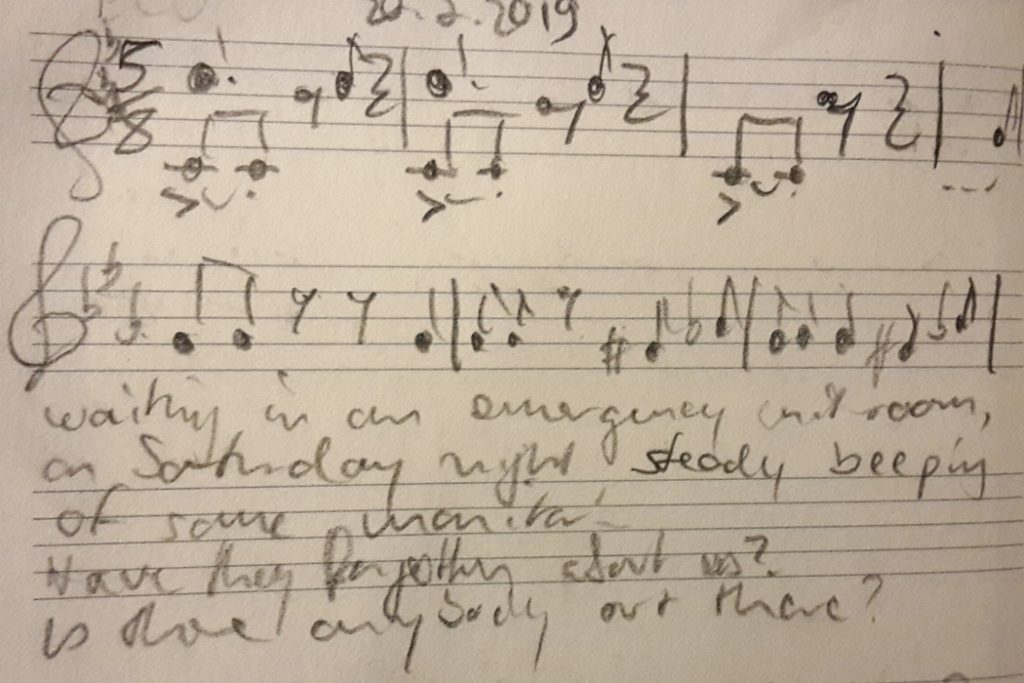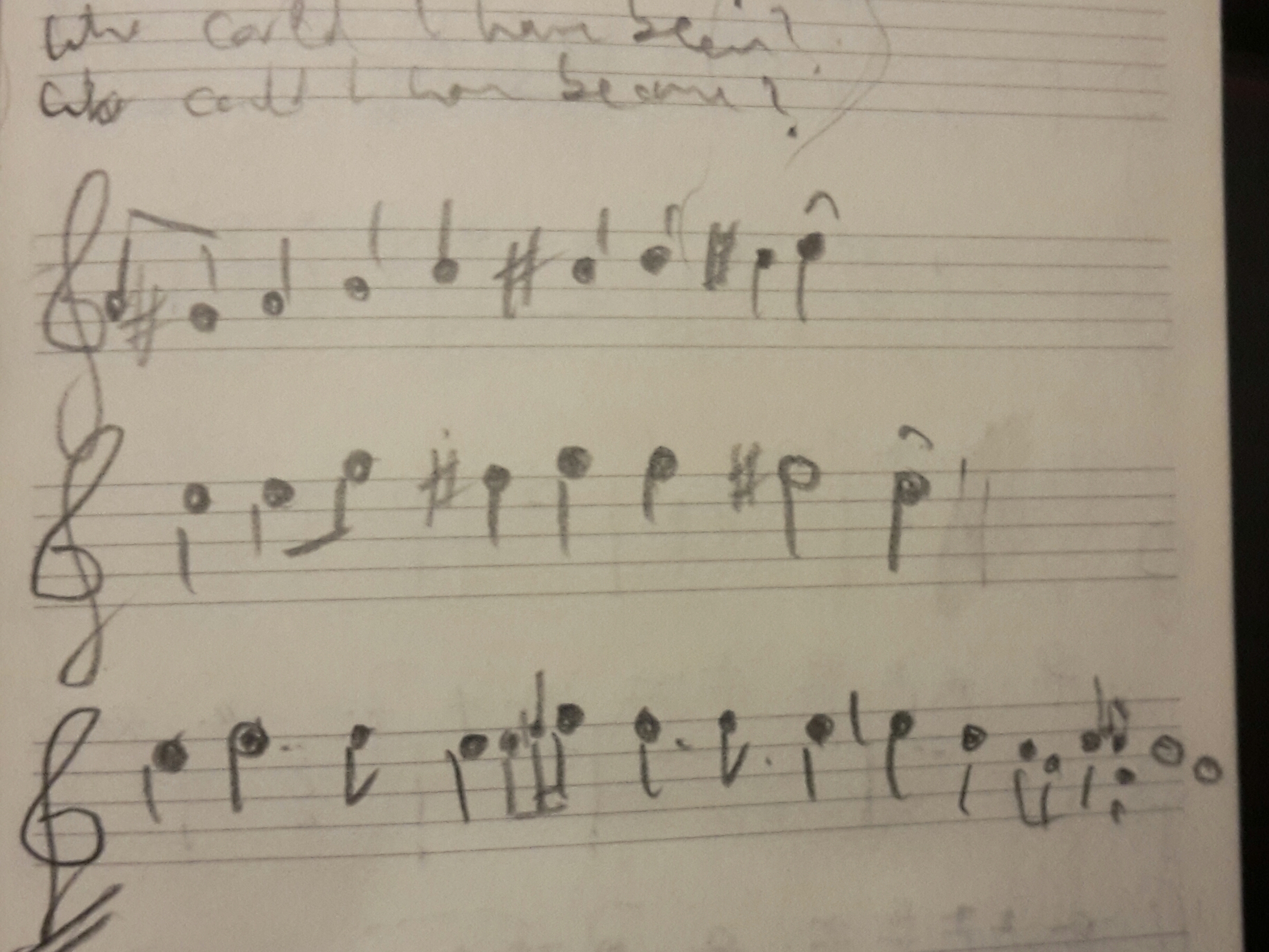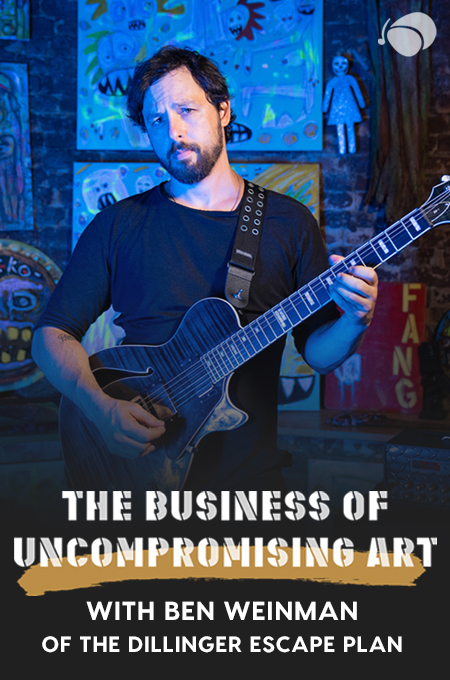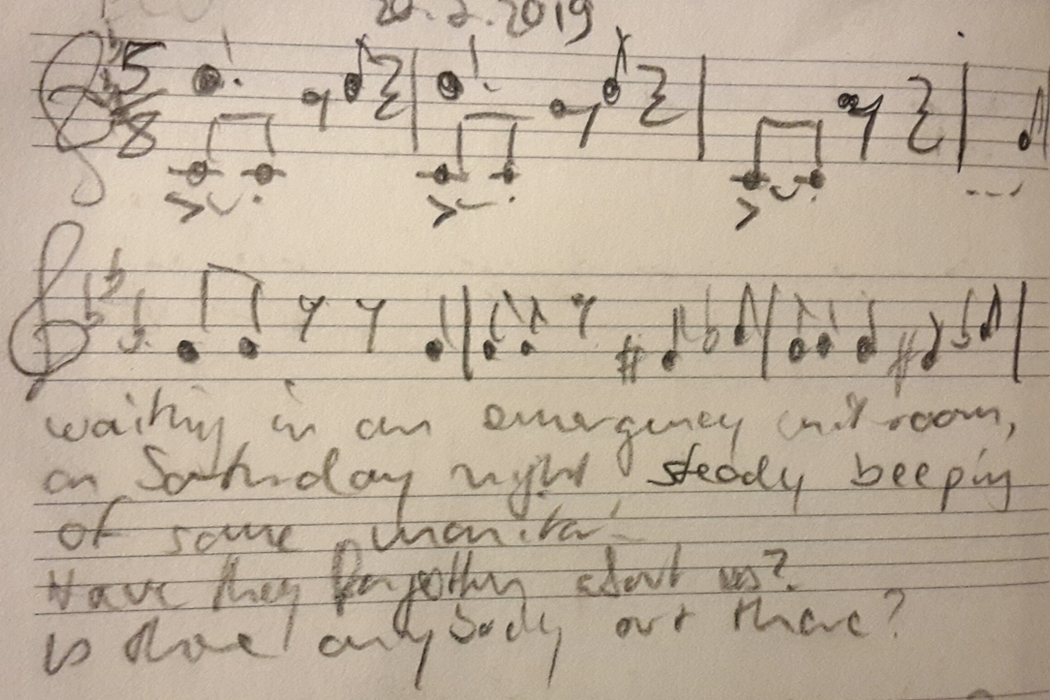
The following reflection was written by Soundfly subscriber and mentored session alumna, Eva Grill, a Löwenstein, Germany based composer and arranger.
By Eva Grill
This reflection is not really meant as a “how to” guide to writing melodies, but rather, a travelogue from my journey of discovery as a working composer.
I’ve written some thoughts simply in an attempt to describe what I’ve found, and still am finding out, along the way, about how melodic inspiration comes to me; because it’s very much an ongoing process. Melodies that “speak to me” make me want to sing, and they create immediate intrigue and emotion. I’m still trying to find out how that happens and what these melodies contain.
I hope that these reflections can be useful and inspiring to you. Enjoy!
Arpeggiated Chords
This is one of the first ways that melodies come to me in the composing process. I sometimes start out just playing chords on the piano or guitar, then faster or softer, then I play them slower so as to stress the different notes. I’ll stress the lower ones, then the middle or higher ones in the chord, and then I’ll change one or two notes at a time and just listen to how the chord sounds with each change.
Chord arpeggiations remind me of a thin veil through which the daylight is tainted in a certain shade; and those shades darken or lighten depending on your timbres and note choices. You can even imagine this like a thin layer of watercolor painted over another dried color layer, just so that the color still shines through. In slower tempos, it’s as if the color is applied in little dots or drops of color, or at times like contours.
A melody begins to form.
I listen as I play, and if I particularly like a sound, I’ll play it a bit longer to let it sink in and consolidate. In a way, it is like letting the color dry before I go on painting another layer over it.
It’s usually difficult to repeat what I come across in these exploratory sessions, so I do a lot of demo recording as I play, to listen back later — which frees up my mind from having to remember what stood out. And I am free to go on exploring other ideas as they come to me, without needing to choose what’s important in the moment.
When searching for melodies, you must open yourself up to listening vertically — listening to the chords, the harmonic relationships, the color shades — as well as horizontally — how the notes relate to each other over time. This kind of improvising is just a starting point, remember, you’re free to do whatever you want with the results later on.
+ Learn songwriting, theory, production, composition, arranging, mixing, and more — whenever you want and wherever you are. Subscribe for unlimited access!
Using Drones
Since I’ve discovered a set of Shruti box drones in all twelve semitones of the chromatic scale, I often use them as a part of my warm-up exercises for voice practice. I vocalize accompanied by one of the drones, each with a length of 11 minutes (which provides a lot of time to play and forget about time for a little while); it’s really relaxing.
The drones have one constant harmony while my melodies above them change, and this creates tension asking for a release. It’s a simple study in resolving leading tones.
I use these, courtesy of Alex Jacobs.
Starting with a Shruti box drone, I found that I can create my own kind of drones, as well as chord progressions, using an organ or bandoneon in my notation software. I notate it as long as I need, loop it a few times, and export a track that I can use to sing along.
I’ve also discovered a piece called “Prayer of The Heart” by John Tavener, which he wrote for Björk. It’s about 15 minutes, very calm, and has a chord progression that starts from C major and modulates through the complete circle of fifths until finally arriving at C major again. This is a great open-ended work to use if I need to generate melodic concepts out of the blue.
Writing Melodies And Chords from the Imagination
I have a small pocket-sized notebook that I nearly always carry with me. It serves me when a melody or chord comes to mind and I don’t have an instrument at hand or cannot use my voice (such as on the train).
Below is an image showing the humble beginnings of what turned out to be a short piece for an unaccompanied melodic instrument, which I called “Thin Ice.” The work described a strong feeling of insecurity I had at that time of writing, like walking on very thin ice that could crack or break any time.
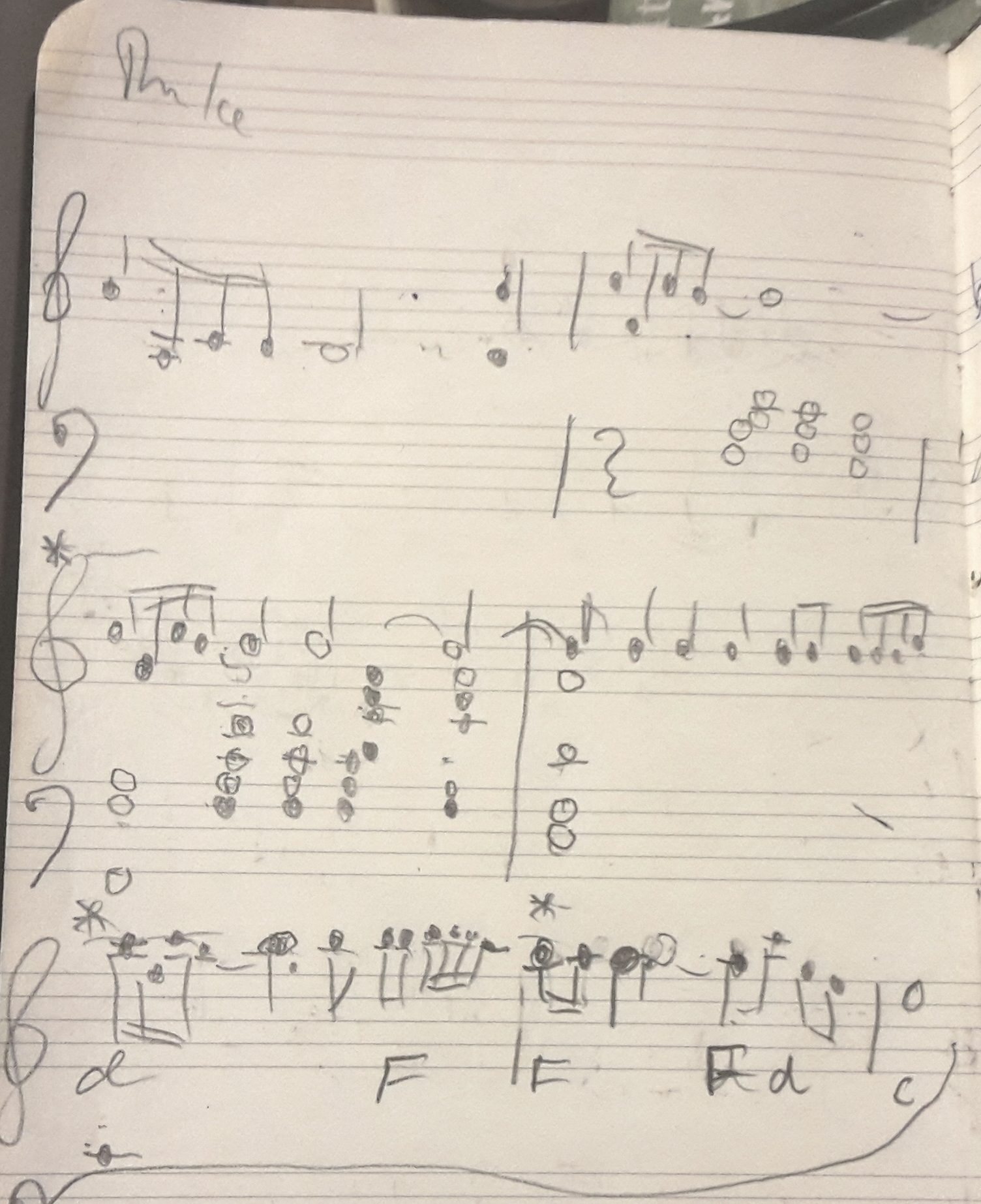
The middle section turned out to be quite different than the original concept. It glides and dances over the ice, rather than succumbing to the fear of it cracking. But for the beginning and end, I retained the 16th note motif that can be seen here in these treble clef sketches. Since this idea came from contemplating about the past — about changes over time — it always felt to me like one of these hymns from several hundred years ago. Maybe one day it will become a four-part part harmony.
Setting Limitations
On that note, I once took part in a daily challenge on Musescore; the idea being to hone one’s voice-leading skills by writing one four-part piece every day, consisting of eight bars only.
So I sat down and tried to harmonize, and on Day 8, this is what came of it.
I then used this method to write choral music during one of my Soundfly mentorship sessions, and found it difficult but somehow also very inspiring. One of the four-part bits I wrote for this challenge partly made its way into my project piece, “Yosemite,” in altered tempo and note values. See if you recognize it at the beginning of the audio:
Sketches
I sometimes write out short sketches using pencil, whether melody, lyrics, or just noises with a certain rhythm that “strike a chord” with me. They may not be consistent pieces, with a beginning and end, but it works for remembering a certain feeling I wanted to convey in the moment of inspiration. I may also jot down a short description or sketch what that moment was like.

When nobody is around, or nobody who would care, I’ll often hum ideas with my voice, or even full-throated sing, and record it to my phone. Often, motifs flow back and forth between all these situations. I may hum something I recently played, or noted down from a recording on my phone originally, or start improvising with a little melody or chord snippet from my notebook.
It all changes over time.
Visual Cues
When out and about, I’ve made it a habit to take photos of what piques my interest or evokes feelings and thoughts. Every now and then, I revisit these photo folders to trigger musical ideas.
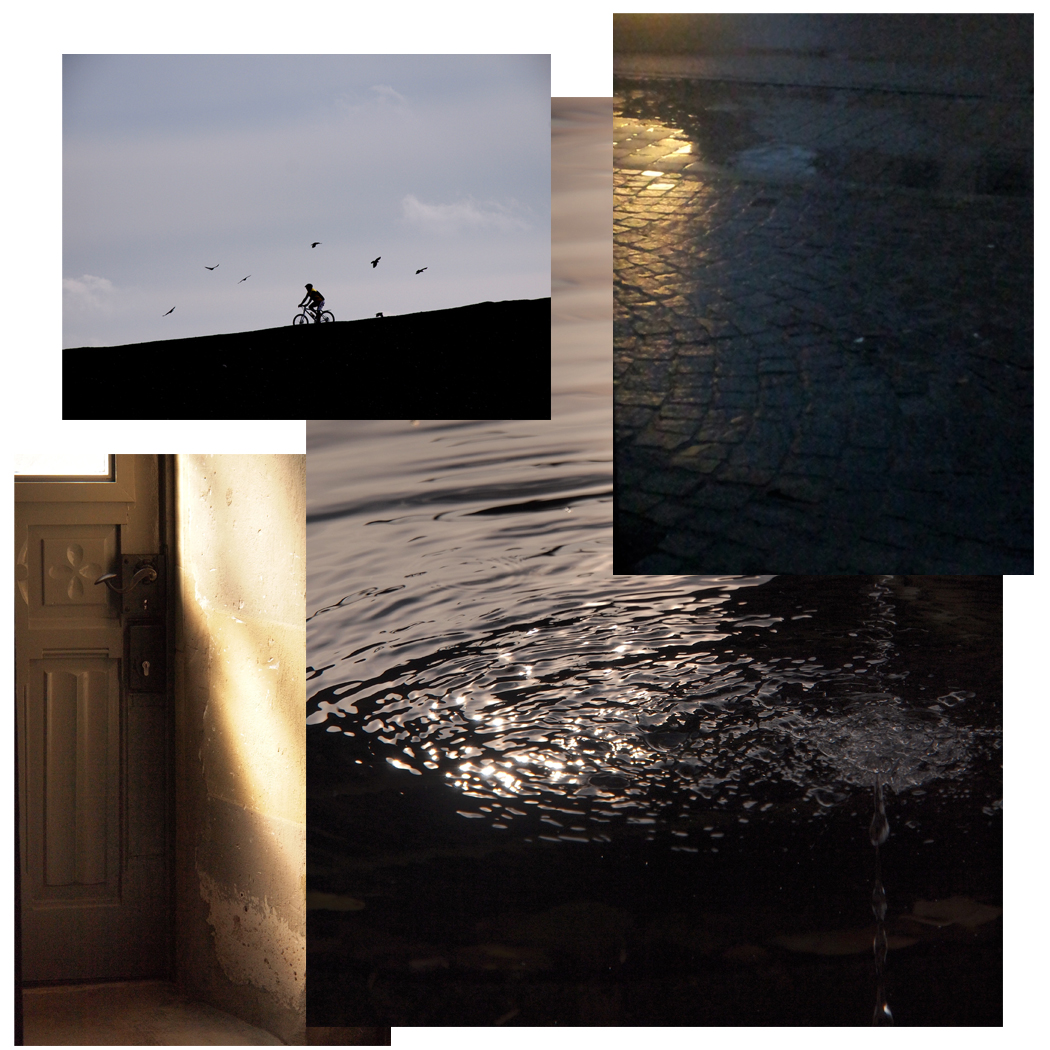
Some seem to me as if they could be part of a movie or music video — they might reveal a movement or a play with shadow and light in an interesting way — so I could imagine embellishing them into a script, or writing out a story to tell. Then it becomes fun to try to score such a scene with a fitting musical backdrop.
In order to combine music and image, I may select several pictures and loop them so that the viewer’s eye can rest on them for a little while, then connect them in a video with transitions in between. I’ve combined such an image row with one of my recorded piano improvisations here using my DAW.
Lastly, in using visual imagery as inspiration for melody, I’ll sometimes take close-up photos of drawings and paintings I’ve made. This often resembles an abstract landscape, and they reveal new lines and relationships that the full image hides. If you’re a visual person, or someone who gets very emotional looking at color, this can help generate musical ideas immensely.
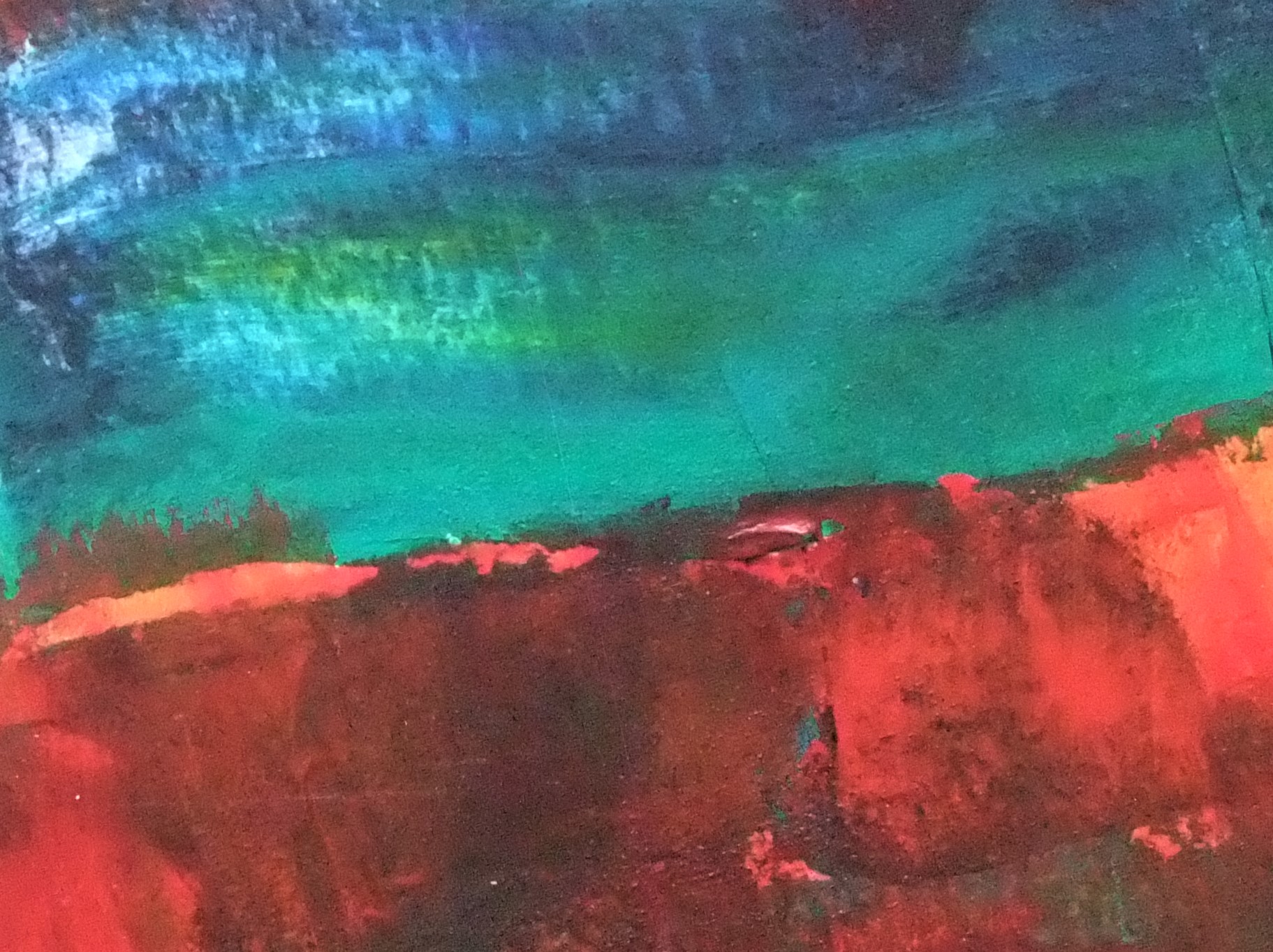
Where do melodies come from for you? Perhaps more evocatively, where do they take you?
What are you looking to achieve this year?
Soundfly’s community of pro music mentors can help you set the right goals, pave the right path toward success, and stick to schedules and routines that you develop together, so you improve every step of the way. Tell us what you’re working on, and we’ll find the right mentor for you!
